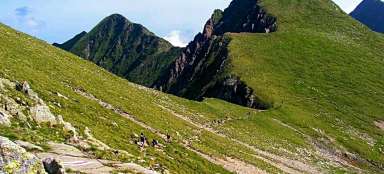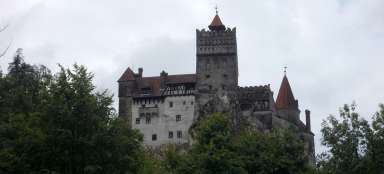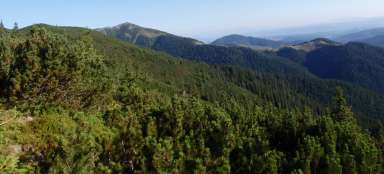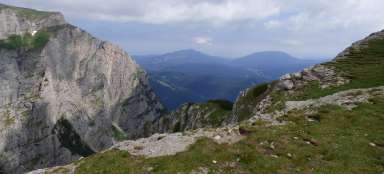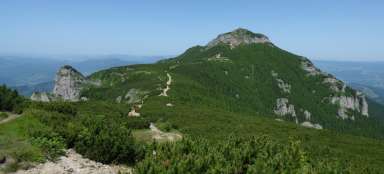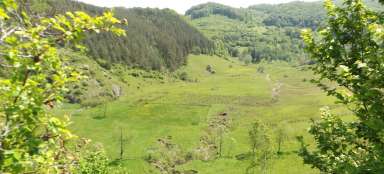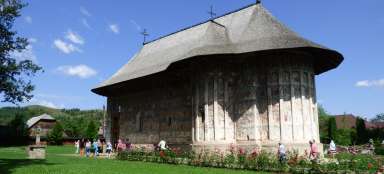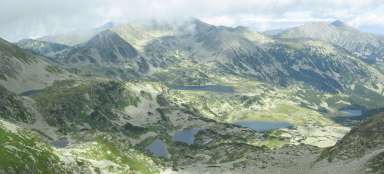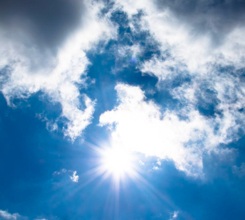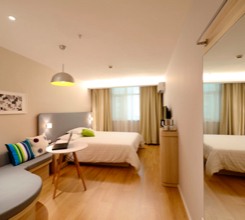Part 3. Sighisoara and Sibiu
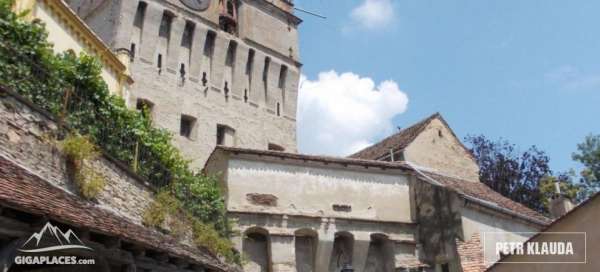
Romanian cities, which are definitely worth a visit, especially the first, associated with one of the most controversial figures in Romanian history.
The cities of Sighisoara and Sibiu
On Wednesday morning I leave for Sighisoara (Segešvár) at 9 o'clock by IR train. It runs for over 2 and a half hours and I had to bet 40 RON for a ticket. I arrive at a small train station in a town with 28,000 inhabitants. In the description of the country's monuments, it is listed as number one in the TOP 10. It is inscribed on the UNESCO World Heritage List. In front of the station is a monument to a narrow-gauge locomotive that was used in the area. I go to the center along Strada Garcia. Even before the river Tarnava stands the beautiful Cathedral of the Holy Trinity, opened in 1937 and built in the neo-Byzantine style. I cross the river and reach the historic city center. Strada Tumului rises to the gate to the city center. I walk under the clock tower with a special astronomical clock. The tower was built in the 14th century and then raised in the seventeenth century. The figures of the astronomical clock represent the days of the week as well as the gods, planets and metals. You can climb the tower, in the past it was also important as a fire observatory. In front of me is the monastery church, the remains of a monastery, which was founded in 1289 and was destroyed at the end of the 19th century. Behind the church there is a bust where almost all visitors to the city are photographed, namely the Wallachian prince Vlad III Tepeš. Behind it is the town hall building and if you move to the terrace by the walls, you have a nice view of the city. They pay due attention to „Vlad“ here, because his father Vlad II was here as the governor of Transylvania and Vlad III was born here in 1431. There is a memorial plaque on the house where this event was supposed to take place. From here I just walk down a small alley and I am located on Piata Cetatii, which is a small square and a kind of center of cafes, pubs and souvenir shops. After Strada Scolii, I get to another point of interest, the covered wooden staircase from 1654. The original number of 300 steps has been reduced over the years and intermediate platforms were built and will lead us to the evangelical church dedicated to St. Nicholas, which was built in stages for 180 years. From the church there is again a nice view of the city. I can only wander in the small streets of the town founded by the Transylvanian Saxons in the 12th century. Around the historical part, walls with several towers named after craft guilds have been preserved, so we can find, for example, a tailors' tower or a rope tower. Another surprise awaits me in front of the Catholic Church from 1895. There is a memorial to another important inhabitant of the city, the Hungarian poet Sándor Petöfi, who died here. I am just arriving at a time when there is a group of tourists and a guide is singing something from his set to music. Although I don't understand a word (it's in Hungarian), the voice of the guide, who was definitely trained and the acoustics with the church behind me, won't let me listen to the end. Slowly it's time to leave, I still jump to the local Kaufland to shop and I return to the station around the Reformation Church from 1888. This time I'm going by personal train. An electric locomotive with one wagon is coming and I have to choose my fellow passengers, because many of them do not inspire confidence and I remembered a bit about the night express trains to Slovakia and their staff. Along the way, I replay once again what I saw and I really recommend a visit to this town to everyone. Sibiu is waiting for me the next day. A passenger train here takes almost 4 hours here for 150 km. Although the modern Desiro motor unit, known from German tracks and here and there from us, arrives, but probably a new sport has spread in the region, throwing objects on the relatively large windows of this unit, so every other window has a large crack, which is only covered with tape. . Sibiu (Czech: Sibiň) is a large city, almost 150,000 inhabitants live here, since the city I can see that we pass differently, pass and cross the narrow-gauge railway. These are the remains of a track that once led to Sighisoara, today only about 5 kilometers long section with museum traffic remains. Unfortunately, in Romania it has taken a big step in modernization and construction since the revolution, but also thanks to this, a number of interesting historical railway or tram operations quickly disappeared. Sibiu is also connected with one such extinction, from there the track led to the village of Rasinari, where the old trams turned on the track triangle. I have about 2 hours to explore the city. Right next to the station I pass the Roman Catholic Chapel of the Holy Cross. After crossing the main road, which, by the way, I came to Romania on the first day, there is another stand of the same church, this time the church and monastery of St. Ursula. I continue to see it on Piata Mare Square, which is already the city center, with the town hall, the Brukenthal National Museum with an important collection of paintings housed in the Baroque Brukenthal Palace, the Roman Catholic Church of St. Trinity (partly under scaffolding at the time of my visit) and the town hall where you will also find tourist information. But I asked in vain for a stamp for the wandrbuch. An exhibition of some metal creations was taking place in the square, and the construction of the stage suggested the transformation of the plaza into a cultural stand. It was enough to go through the passage at the church and I get to other attractions. On the one hand it is a Gothic evangelical church of the Holy Cross built and rebuilt from 1371 to 1520 when it was completed and on the other hand another Piata Mioa square with a big tourist attraction „Lies“ bridge, the oldest cast iron bridge in Romania from 1859. Three legends are associated with it. from different periods. There are also two ethnographic museums in the square and there are book markets. There is also a town hall tower from the 13th century, which can be climbed for views of the city. I continue along Strada Nicolae Balcescu, which is a pedestrian area with many restaurants, cafes and shops. Two streets away is the Orthodox Church of the Holy Trinity, opened in 1906, to the construction of which Emperor Joseph I also contributed. Through the park with many statues I get to the street „Pevnostní“ (Strada Catetea) with the remains of the walls and three towers, built in the years 1357 – 1366, a carpentry, ceramic and rifle tower. Among the walls is the building of the Siberian Philharmonic and the Museum of History. At the end of the street is a bastion named after the then mayor Peter Haller and built in the middle of the 16th century. And here I am slowly returning to the station. I still register the synagogue on the street of the Constitution and slowly walk to the station. After a while, the motorbike will slowly rock into Fagaras, but not until the next episode.
Holy Trinity Cathedral
Beautiful cathedral in Sighisoara built in the neo-Byzantine style


Sighisoara Center
The colorful houses in the city center will make you wander the narrow streets, at least for a while.
Birthplace of Vlad III Tepeš.
The birthplace of the cruel ruler of Wallachia still attracts many tourists.

Sibiu - Piata Mioa Square
Beautifully renovated houses on the square, where traditional book markets take place
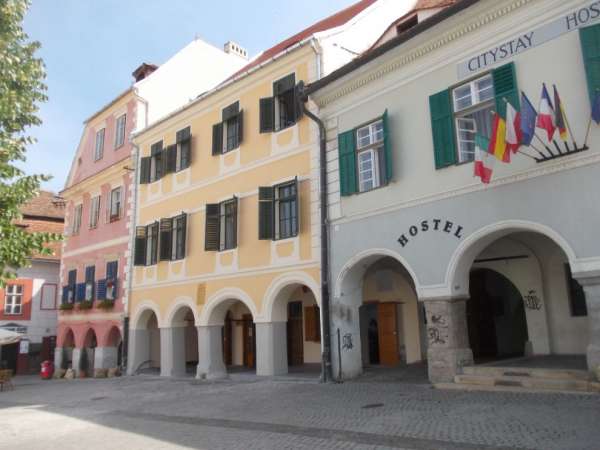
Sibiu - Brukenthal Museum
The museum is housed in the most important Baroque building in Transylvania – Brukenthal Palace

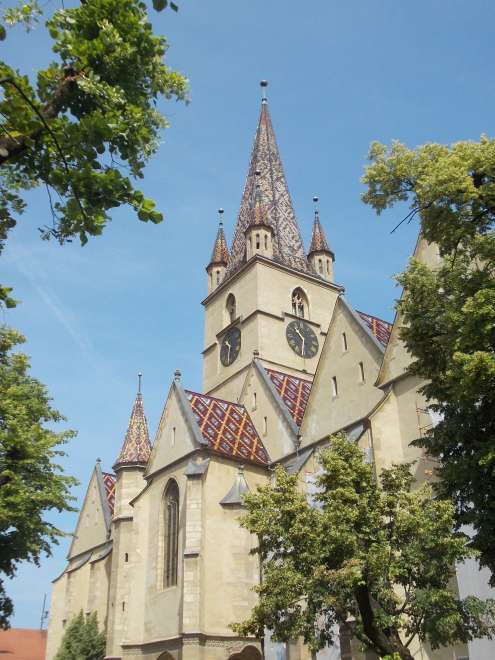
Sibiu - Church of the Holy Cross
The Gothic church was built for almost 140 years.


